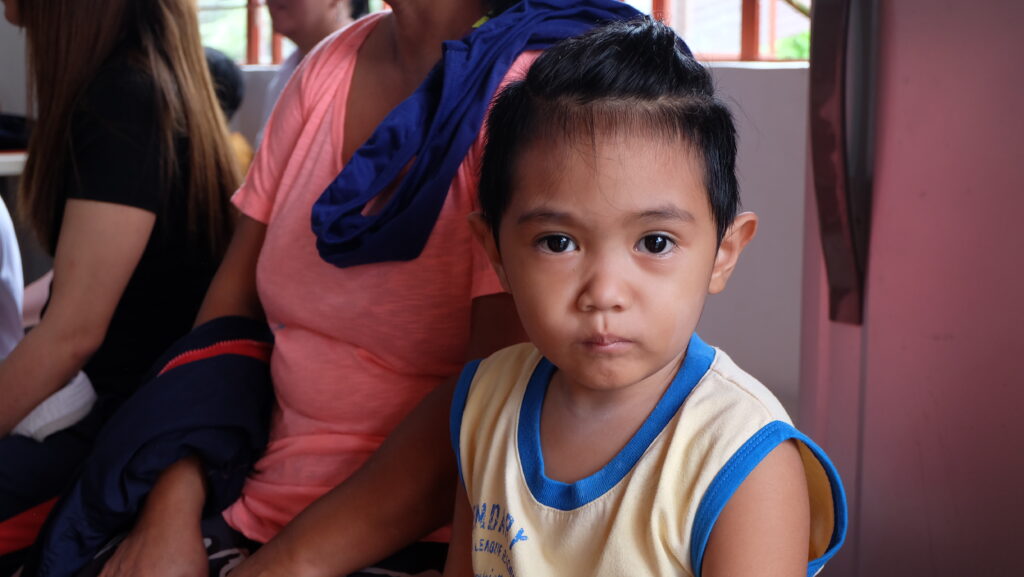Poverty means more than a lack of income. It also means a lack of resources to ensure sustainable livelihoods, such as food, clothing, clean water and proper shelter.
Poverty has many detrimental outcomes for children — hunger and malnutrition, ill-health, limited or a lack of access to education and other basic services. When children are raised in impoverished households, they often have to drop out of school to help their families or don’t attend school at all. Without an education, they have very little chance of breaking the cycle of poverty in which they live.
Today 385 million children around the world live in poverty.
Poverty can cause children permanent damage, both physically and mentally, and in both the short and long term. A lack of essentials can stunt their growth, cause them to fall behind in school, and lead to health problems for them. It also affects their roles within their families, communities, and society as a whole. Poverty denies children their human rights, and it leads to a vicious cycle of deprivation, which is difficult to break without proper support or assistance.
What is the definition of child poverty?
According to UNICEF, child poverty is when a child is living within a household in which the family’s economic resources are below the threshold of what is required to meet their basic needs such as food, clothing, housing and hygiene items.
Why is child poverty an issue?
Yes, child poverty is an issue that effects millions of children around the world every year. UNICEF states that the consequences of child poverty are detrimental. Children living in poverty are twice as likely to die in childhood than children not living in poverty.
What are the causes of child poverty?
Child poverty is caused by parental unemployment, disability, discrimination, lack of education, and lack of social services.
Global poverty facts
– According to UNICEF, 333 million children around the world live in poverty
– Children currently make up half of the global poor population
– Impoverished children are twice as likely to die in childhood than their wealthier peers
– Globally, 1 billion children lack nutritional food and basic necessities
– According to the World Bank, 15.9% of children around the world are living in extreme poverty
National poverty facts
– In 2022, 16.3% of children under the age of 18 in the United States was living in poverty

Poverty has detrimental effects on children that can last a lifetime.
– 11.6 million children in the United States today are living in low-income households
– 17.3% (6.4 million) of households with children were food insecure in 2022
– Children living in poverty have a higher rate of absenteeism or leave school altogether because they are more likely to have to work or care for family members
– Students who come from low-income families are 7 times more likely to drop out of school than those from families with higher incomes
What Children Incorporated does to help alleviate childhood poverty
Children Incorporated provides basic necessities such as food, clothing, healthcare, and educational support to children living in poverty in the U.S. and abroad. These essentials, so often taken for granted, are vital to a child’s growth and success in school. Each year, we give thousands of impoverished children all over the world a chance at a better life.
How you can help
You can help a child living in poverty in a few different ways. One is through our child sponsorship program. Our sponsorship program does more than just feed or clothe a child; for $35 a month, you not only help meet the basic and critical needs of a child, but you also make an investment in their future.
For $35 a month, you not only help meet the basic and critical needs of a child, but you also make an investment in their future.
Our policy has always been to consider the needs of each sponsored child on an individual basis. We work closely with our volunteer coordinators at our project sites, who are familiar with each individual circumstance, and the needs of every child in their care. Sponsorship donations are sent to our sites – orphanages, homes, community centers, and schools – at the beginning of each month in the form of subsidy stipends. Our on-site volunteer coordinators use these funds to purchase basic and education-related items for children in our program, to ensure that they have what they need to do their very best and succeed in school.
You can also help children in need by donating to one of our special funds. Our special funds offer a variety of giving options for sponsors who wish to further their support, as well as for donors who wish to make a difference without making a commitment.
***
HOW DO I SPONSOR A CHILD with Children Incorporated?
You can sponsor a child with Children Incorporated in one of three ways – call our office at 1-800-538-5381 and speak with one of our staff members; email us at sponsorship@children-inc.org; or go online to our donation portal, create an account, and search for a child that is available for sponsorship.
References:
http://nccp.org/topics/childpoverty.html
http://nccp.org/publications/pub_1194.html
United Nations Inter-agency Group for Child Mortality Estimation (UN IGME). “UNICEF: Committing to Child Survival: A promise renewed.” UNICEF, 2014. Accessed February 25, 2015.
http://www.feedingamerica.org/assets/pdfs/fact-sheets/child-hunger-fact-sheet.pdf
https://ourworldindata.org/children-and-poverty-results-from-new-data

